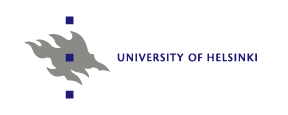- FIN-CLARIAH Research Infrastructure
A new national research infrastructure initiative FIN-CLARIAH for...
8.12.2021 8:12 by eahyvone - WarMemoirSampo published on December 3, 2021
A new “Sampo” application, “WarMemoirSampo”...
8.12.2021 8:04 by eahyvone - Five new SeCo papers accepted for the ISWC 2021
The 20th International Semantic Web Conference (ISWC 2021), the...
2.8.2021 6:53 by eahyvone
- Annastiina Ahola, Lilli Peura, Rafael Leal, Heikki Rantala and Eero Hyvönen: Using generative AI and LLMs to enrich art collection metadata for searching, browsing, and studying art history in Digital Humanities
- Eero Hyvönen, Petri Leskinen, Alexandre Lionnet, Blandine Blukacz-Louisfert, Pierre-Etienne Bourneuf, Davide Rodogno, Grégoire Mallard, and Florian Cafiero: Linked Open Data Approach to Study the Assembly Minutes of International Organizations and Their Underlying Prosopography in the Real World Context
- Eero Hyvönen, Petri Leskinen, Alexandre Lionnet, Blandine Blukacz-Louisfert, Pierre-Etienne Bourneuf, Davide Rodogno, Grégoire Mallard, and Florian Cafiero: A Linked Open Data Infrastructure for Studying Historical Activities of International Organizations: First Results on the League of Nations (1920-1946)
- Petri Leskinen, Eero Hyvönen, Alexandre Lionnet, Blandine Blukacz-Louisfert, Pierre-Etienne Bourneuf, Davide Rodogno, Grégoire Mallard, and Florian Cafiero: A Linked Open Data Service and Semantic Portal to Study the Assembly Minutes and Prosopography of the League of Nations (1920–1946)

Forging the Sampo on the Semantic Web based on Linked Data
Tutorial: How to create a Linked Open Data service and semantic portal for your Cultural Heritage data
Tuesday, March 4, 2024, 14:00–18:00 (13:00-17:00 CET)
DHNB 2025 Conference, Tarto, Estonia
Learning objectives
Since 2002, the Semantic Computing Research Group (SeCo) has been involved in 1) developing a national semantic web infrastructure and 2) the "Sampo series" of over 20 Linked Open Data (LOD) services and semantic portals on top of them in use on the Web. This work goes on today as part of the national DARIAH-FI research infrastructure program, pertaining to the LOD work package led by the SeCo group. The goal of this tutorial is to explain in practice how the models, tools, datasets, and portals developed can be used for creating new data services and applications for Digital Humanities research, based on one's own data available in different formats.
Program
Introduction- 14:00–14:30 Why use Linked Open Data: Sampo model for creating LOD services and semantic portals
Eero Hyvönen
Slides: pdf; Video The Semantic Web and AI for Digital Humanities; Example of a Sampo project and portal demo: LetterSampo - The Republic of Letters on the Semantic Web
- 14:30–14:45 Metadata models and ontologies for knowledge representation
Jouni Tuominen
Slides: pdf - 14:45–15:15 Creating LOD from databases
Annastiiina Ahola, Heikki Rantala Slides: pdf - 15:15–15:45 Semantic enrichment: data linking, reasoning, and knowledge extraction from texts
Petri Leskinen and Rafael Leal Slides: pdf - 15:45-16:00 Publishing Sampo data (dump), data service (LDF.fi), and portal on the Web
Jouni Tuominen
Slides: pdf - 16:00-16:30 Coffee Break
- 16:30-17:00 Using the LOD service via SPARQL and Notebooks, data analysis, network analysis, and visualizations
Petri Leskinen
Slides: pdf - 17:00-17:30 Creating a semantic portal easily using Sampo-UI
Annastiina Ahola, Heikki Rantala
Slides: pdf - 17:30-18:00 Using the portal for Digital Humanities research: ParliamentSampo and other examples
Heikki Rantala
Slides: pdf
More information
Free online video course: Linked Data Technologies for Cultural Heritage and Digital Humanities: Introducing the Semantic Web in Video Lectures
See the project homepage for more detailed explanations of the underlying research.
Following two articles overview our research and lessons learned regarding 1) the national LOD infrastructure and 2) Sampo series of LOD services and semantic portals:
- Eero Hyvönen: How to Create a National Cross-domain Ontology and Linked Data Infrastructure and Use It on the Semantic Web. Semantic Web - Interoperability, Usability, Applicability, IOS Press, 2024. DOI: 10.3233/SW-243468.
- Eero Hyvönen: Digital Humanities on the Semantic Web: Sampo Model and Portal Series. Semantic Web – Interoperability, Usability, Applicability, vol. 14, no. 4, pp. 729-744, IOS Press, 2023.




